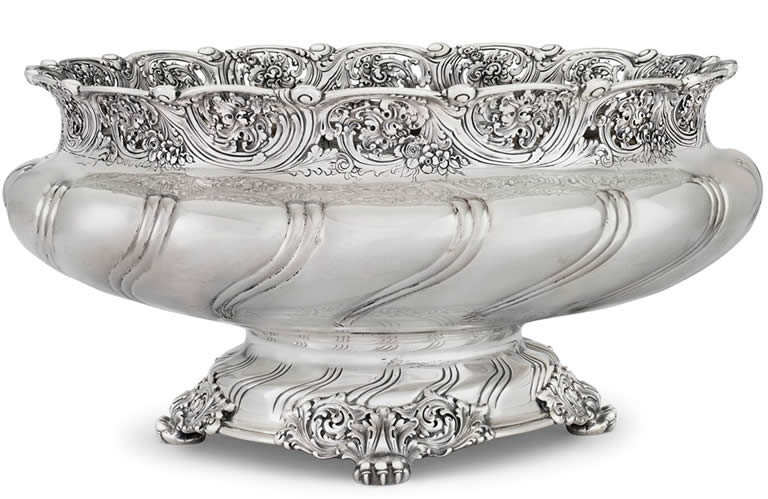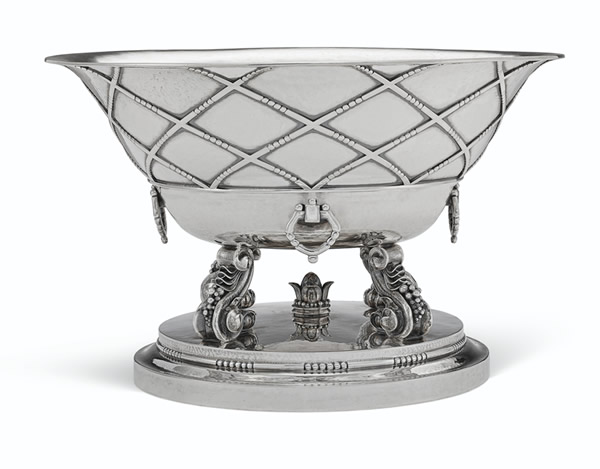Silver Flatware Restoration in London
Reviving Heritage and Charm
Silver flatware adds elegance and luxury to any dining experience. However, over time, these items can suffer from tarnishing, scratches, and general wear due to frequent use and exposure to food, moisture, and air. Restoration of silver flatware ensures that your pieces retain their beauty and functionality, making them a pleasure to use and admire at every meal.


The Joy of Silver Flatware Restoration
Restoring silver flatware is an investment in preserving the beauty, functionality, and value of your pieces. Whether it’s a treasured family heirloom or an elegant addition to your dining table, proper restoration ensures that your silver flatware continues to serve its purpose while maintaining its timeless appeal.
Silver flatware restoration highlights the blend of practicality and artistry, bringing back the shine and elegance that make these items special for every meal.
When to Seek Professional Restoration
If your silver flatware has significant damage, such as deep scratches, severe tarnish, or extensive wear, professional restoration is recommended. Experts have the tools and knowledge to restore your flatware without causing further harm, especially for valuable or heirloom pieces.
Common Issues with Silver Flatware
Silver flatware, like other silver items, faces several challenges over time, especially with regular use:
- Tarnishing: Exposure to air causes silver to tarnish, which dulls its finish and affects its shine.
- Scratches: Daily use, particularly cutting or scraping on hard surfaces, can lead to visible scratches on the surface of your flatware.
- Dents and Dings: Silver flatware can sometimes suffer from dents or bends due to accidents, such as dropping or mishandling.
- Discolouration: Prolonged exposure to food acids, like those in citrus or wine, can cause discolouration or dark spots.
- Plating Wear: For silver-plated flatware, the thin silver layer can wear off over time, exposing the base metal beneath.
Why is Silver Flatware Restoration Important?
Restoring silver flatware serves several important purposes:
- Aesthetic Appeal: Restoration brings back the original luster and shine of your silver flatware, enhancing its beauty and elegance.
- Functionality: Restoring the flatware ensures that it remains both functional and safe to use.
- Preservation: Timely restoration helps prevent further deterioration, ensuring your silver flatware lasts for generations.
- Sentimental or Collectible Value: Many silver flatware sets are family heirlooms or valuable collectibles. Restoration helps maintain their sentimental and monetary worth.
The Science of Tarnish
Tarnish forms when silver reacts with sulfur compounds in the air, creating a dark layer of silver sulfide on the surface. While this reaction is natural, it detracts from the bowl’s beauty. Restoration involves safely removing tarnish without damaging the silver underneath.
The Process of Restoring Silver Flatware
Restoring silver flatware requires a careful and detailed approach to ensure that both the aesthetics and functionality are preserved:
1. Inspection and Assessment
The restoration process begins with a thorough inspection of each piece of flatware. This includes checking for tarnish, scratches, dents, or structural damage. The flatware is also assessed for any plating wear or discolouration.
2. Cleaning and Surface Preparation
A gentle cleaning process is used to remove dirt, grime, and tarnish. For lightly tarnished flatware, mild soap and water, along with a soft cloth, may be used. Heavier tarnish may require a specialised silver cleaner or natural solution, like a baking soda paste, to restore shine.
3. Tarnish Removal
Tarnish is one of the most common issues with silver flatware. Specialised silver polish is applied to remove tarnish and restore the flatware’s shine. For more delicate or heavily tarnished items, additional care is taken to ensure the integrity of the piece.
4. Repairing Scratches and Dents
Minor scratches can be buffed out using a soft cloth or polishing tool. Dents or dings are carefully worked out, restoring the flatware’s smooth surface. If necessary, more intensive repairs are carried out, especially for pieces with intricate designs.
5. Replating (If Necessary)
For silver-plated flatware, if the silver layer has worn off, electroplating can be applied to restore the original appearance of the pieces. Replating helps prevent further damage and provides long-term protection.
6. Polishing and Finishing
After repairs, the flatware is polished to enhance its shine. Special attention is given to intricate designs or engravings to ensure they are not worn down during polishing.
Maintaining Restored Silver Flatware
Proper care of restored silver flatware ensures it remains in pristine condition for years to come. Here are some tips:
- Regular Cleaning: After each use, gently clean your silver flatware to remove food residue, moisture, and fingerprints.
- Avoid Harsh Cleaners: Use only gentle cleaning products to prevent scratches and damage to the silver surface.
- Proper Storage: Store your silver flatware in a tarnish-resistant cloth or pouch when not in use to reduce exposure to air and moisture.
- Avoid Prolonged Contact with Food: Avoid leaving flatware in contact with acidic foods or liquids for extended periods, as this can cause discoloration or damage.
Information for Caring for Silverplate Flatware
1. Hand Wash Only
The normal advice for all plated flatware is to avoid washing it in the dishwasher. Wash your plated silverware by hand, in warm soapy water, with a soft sponge or cloth, then rinse and dry with a dry, clean towel. Don't use harsh chemicals or gritty products. Don't over-scrub or wash too often.
2. Use the Right Soap
Any mild dish soap should do, but make sure to use an acid-free soap or detergent with a neutral pH that is free of phosphates and does not contain lemon or another citric acid, as those ingredients can be overly corrosive.
3. Rinse Quickly
Wash silver-plated flatware as quickly as possible after use. At the very least, rinse to remove food from the items after use and don't let them sit dirty. Acidic foods (egg yolks, brussels sprouts, table salt, olives, salad dressing, vinegar, fruit juices, etc.) can corrode silver if left in contact with it for too long.
4. Dry Carefully
Water is the enemy of silverware. Don't leave your plated ware soaking in water for too long, and make sure to dry it thoroughly with a soft cloth as soon as possible to prevent tarnish.
5. Do NOT Over polish
Surprisingly, silver flatware does not need regular polishing and should not be cleaned or polished more than absolutely necessary. Instead of using a chemical polish, if it looks just a little dull, use a polishing cloth. If you care for and store the silverware properly, you will reduce the build-up of tarnish and the need to use polish. Only use silver polish when absolutely necessary, or you'll rub the silver plate off the silverware.
What About the Knife Blades?
Remember that your flatware knife blades will most likely be stainless steel, and they should be cleaned with that metal in mind.
6. Avoid Abrasives
On the occasions when you do need to polish your silverplate flatware, only use a good quality silver polish or cream, not a standard metal polish, which will be too abrasive. If you need to, use a brush with very soft bristles for crevices. Do not, under any circumstance, use wire wool or abrasive cloth to remove stains; this will scratch and damage the silver. As mentioned, polish as seldom as possible since a small amount of metal will be removed each time.
7. Do Not Use Rubber or Latex Gloves
If you wear gloves, make sure that they are made of cotton because rubber gloves contain sulphur that may promote tarnish. Don't wear rubber or latex gloves, and don't let clean silver touch a rubber drying mat.
8. Store Properly
It is important to store your silver flatware properly to prevent scratching, corrosion, and tarnish. Wrap your flatware in tarnish-resistant flannel cloth, acid-free tissue paper, or undyed cotton or linen, or keep it in a flannel-lined drawer. Since air is the cause of tarnish, make sure to keep it in an airtight container. If you don't use it every day, consider storing it in a zip-top plastic bag (Note: don't use rubber bands and avoid storage boxes or chests with rubber seals.)
Silver Repairs, Restoration & Silver Plating by post
Send us your silver for restoration, repairs or silver plating with ease! Simply click the button below to download our "Send by Post" Repair Form. Complete the form and mail your silver item to us. Once repaired, your item will be returned to you securely via Special Delivery.
Let us handle your silver with the care it deserves, no matter where you are!

